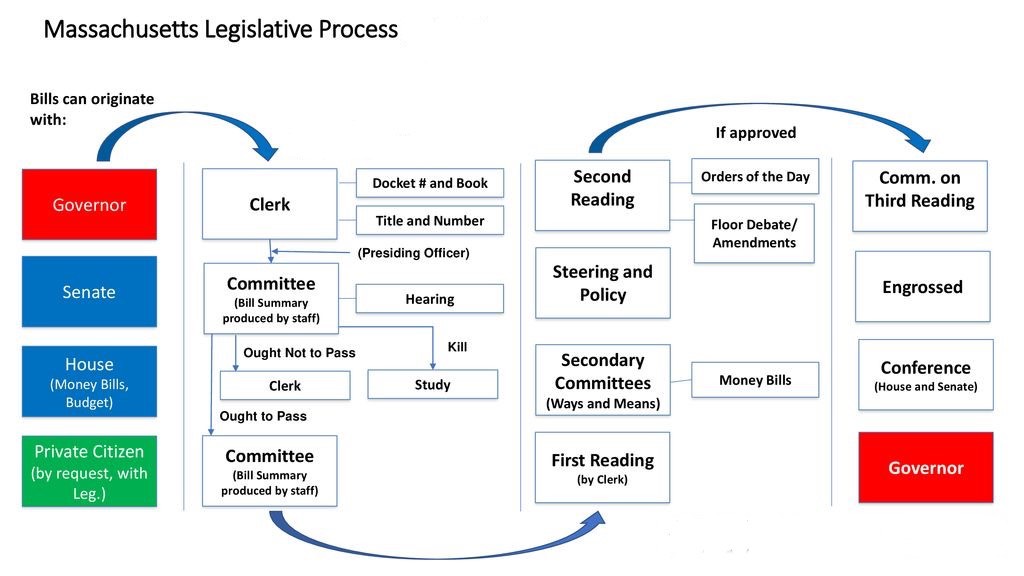
Audio Transcript
Stop 9. The Legislative Process. Massachusetts became a commonwealth in 1780 when it adopted its remarkable constitution. Massachusetts is known officially as the Commonwealth of Massachusetts. It's displaying its intent that its government works for the Commonwealth or common good of its citizens. Only three other U.S. states are Commonwealth. Kentucky, Virginia and Pennsylvania. Massachusetts chose this designation when its first constitution.
The Constitution of Massachusetts Bay was rejected by its cities and towns. The second constitution, which was accepted, was named the Constitution of the Commonwealth of Massachusetts. This document included a groundbreaking Declaration of Rights and was a model for the Constitution of the United States. It is, in fact, the oldest written constitution still in effect in the world today.
Although it has been amended more than 100 times, it is written within the Constitution that both chambers of the legislature must meet every three days. 160 state representatives and 40 state senators work in the state House and they meet to debate potential laws and policies and determine which should be advanced in the legislative process. In order for a bill to become a law, it needs to go through a series of steps as laws go through the legislative process.
They are known as bills submitted. Bills are sent to one of the 29 legislative committees that deal with specific subjects. Committees hold public hearings for bills where citizens, legislators and lobbyists can testify for or against them. After the hearing, the committee members meet to discuss the bill and make a recommendation on if the bill should or should not pass.
Bills are put into the Journal of the House or Senate known as their first reading. The bill is then debated in the House or Senate as it can start in either place at the end of the debate. A vote is taken on the bill and if the bill receives a majority of favorable votes, it is ordered to a second reading.
A bill in second reading is debated again in the House or Senate and can be changed by adding amendments to it after any amendments are approved. The requisite additives or senators vote on the bill and if it receives a majority of favorable votes, it is ordered to a third reading. If it wins a majority of favorable votes, it is sent to the other legislative branch where this process is repeated.
If the bill is approved by both the House and Senate, it is sent to the governor who can sign the bill into law or veto it. It takes a two thirds majority of the House and Senate to overturn a governor's veto. All Massachusetts citizens have the right of free petition and may have bills introduced by a legislator. One example of how the right of sweet petition can be seen in action is through the story of how Miss Palmer Johnson's second grade class made the ladybug the state book.
Students in the second grade class at the Kennedy School in Franklin learned in 1974 that the state did not have a state bug in addition to its many other state symbols. They submitted a petition to their representative to make the ladybug the state bar and participated in each step of the bill's journey through the legislative process, including wearing homemade ladybug costumes to committee hearings.
In the end, the Ladybug bill was signed by Governor Francis. Sergeant making the ladybug the state bug.